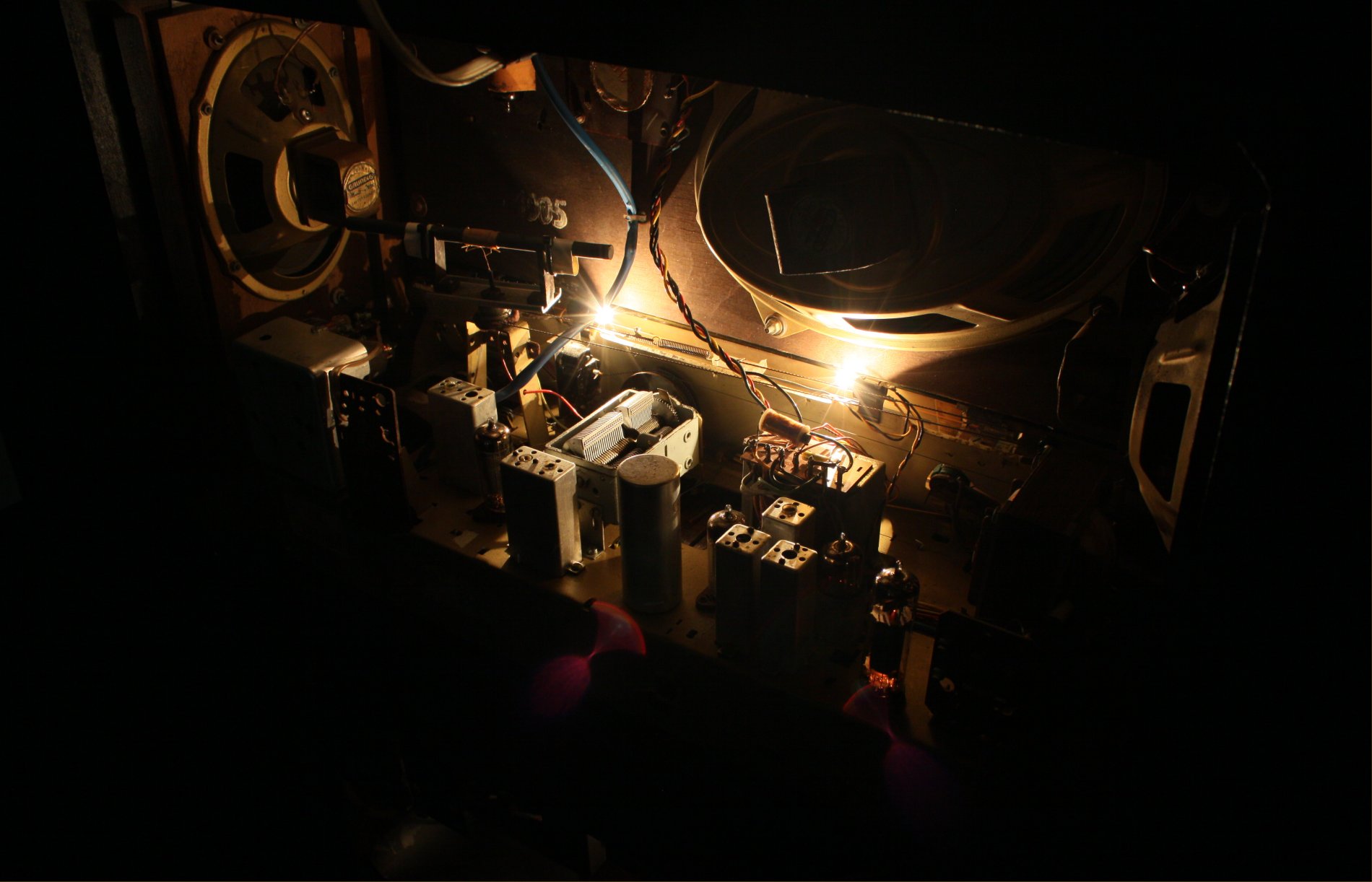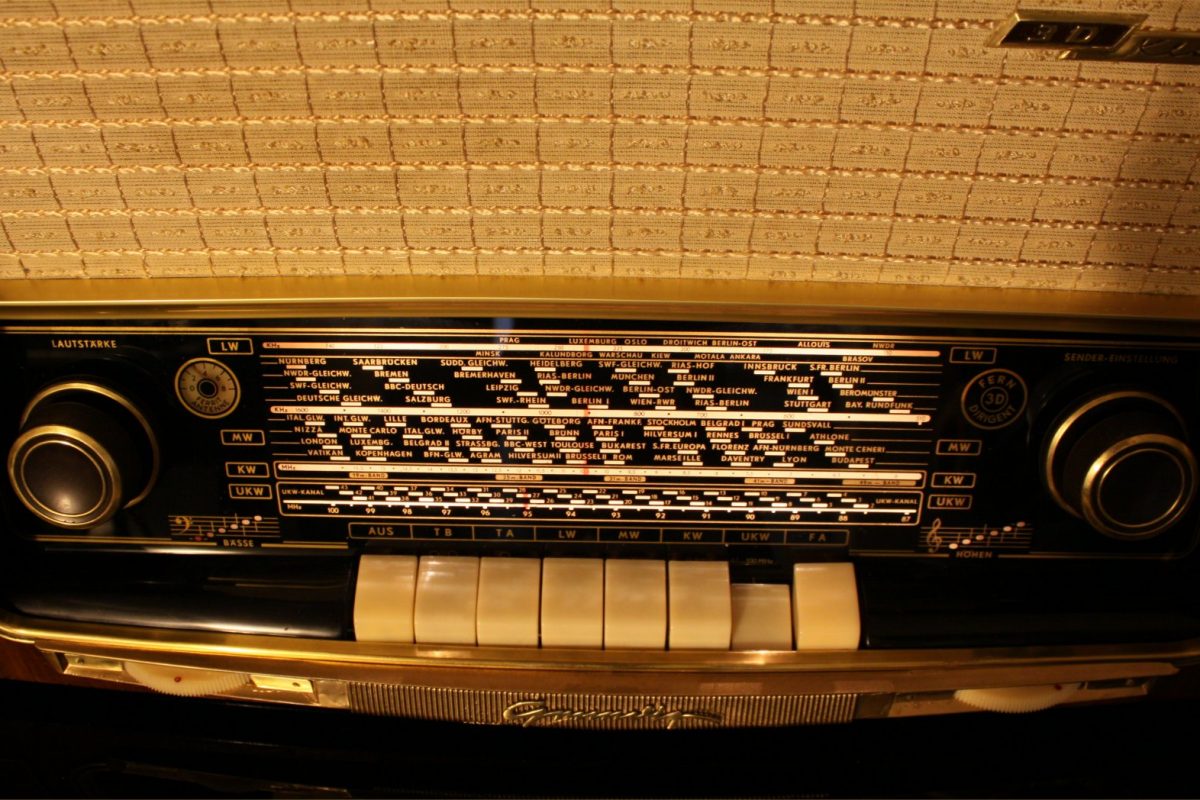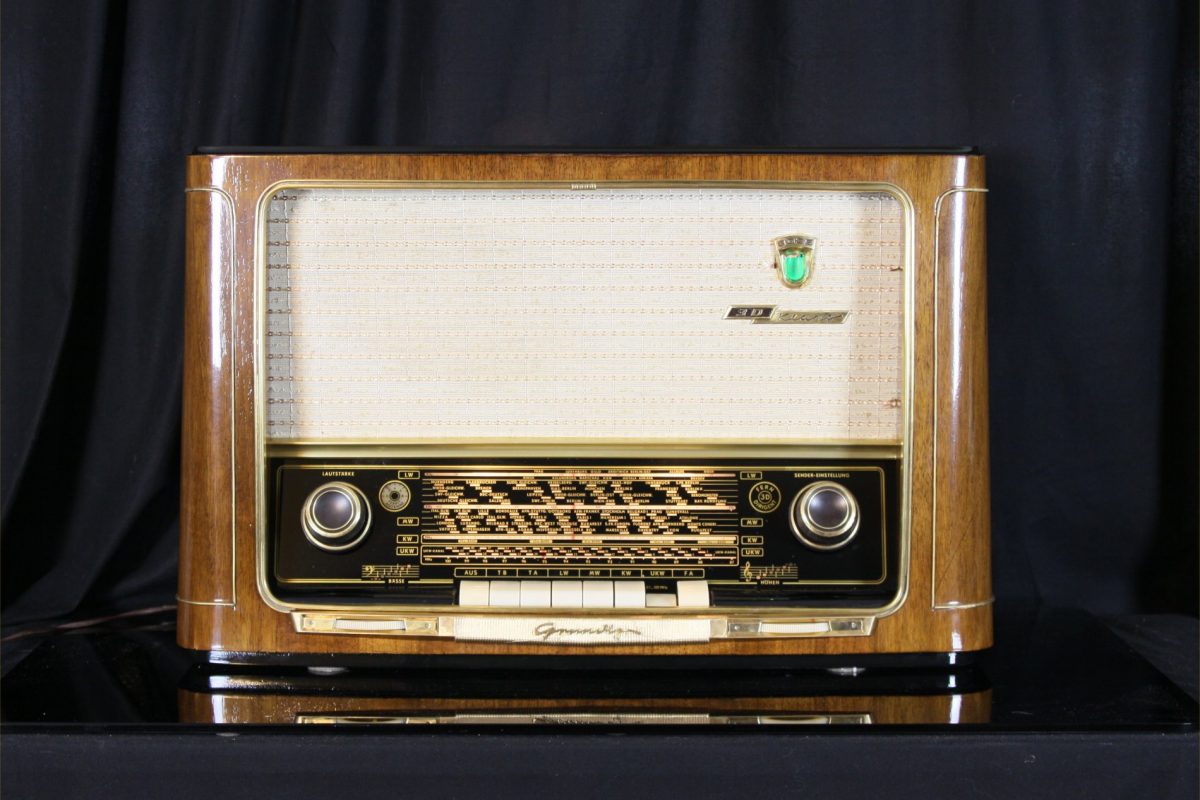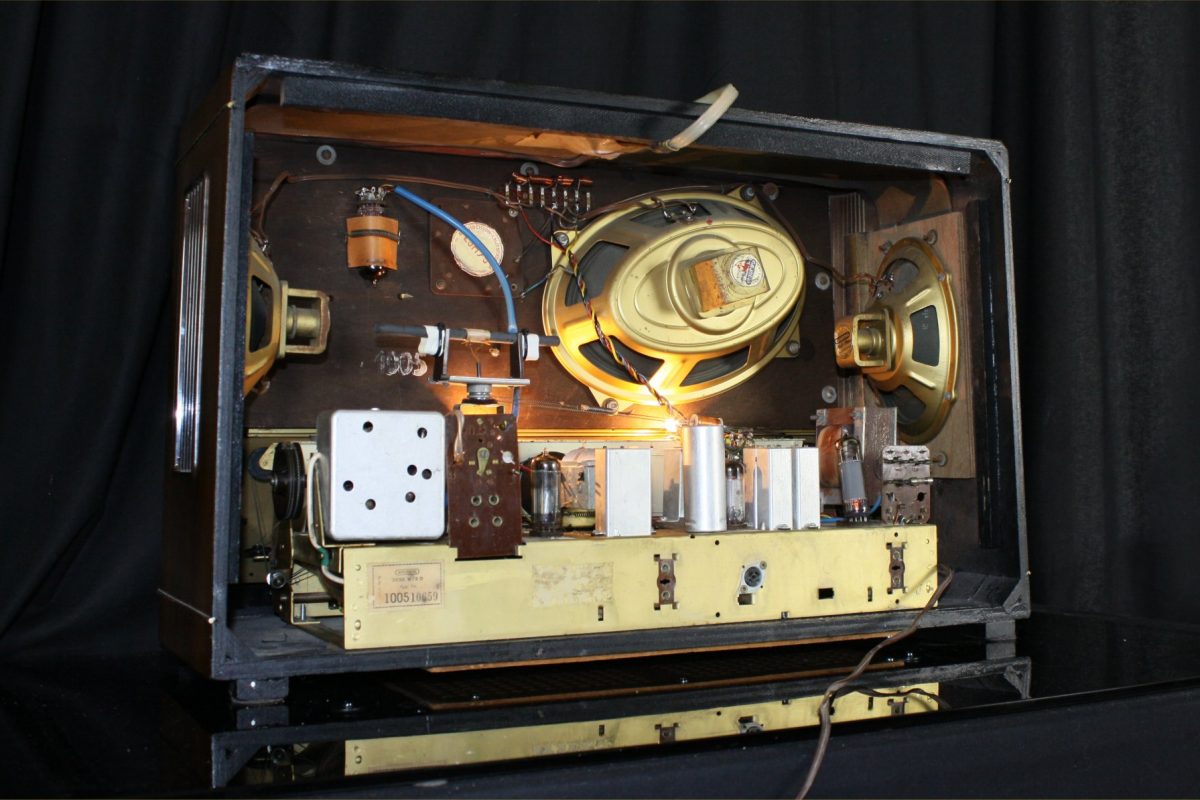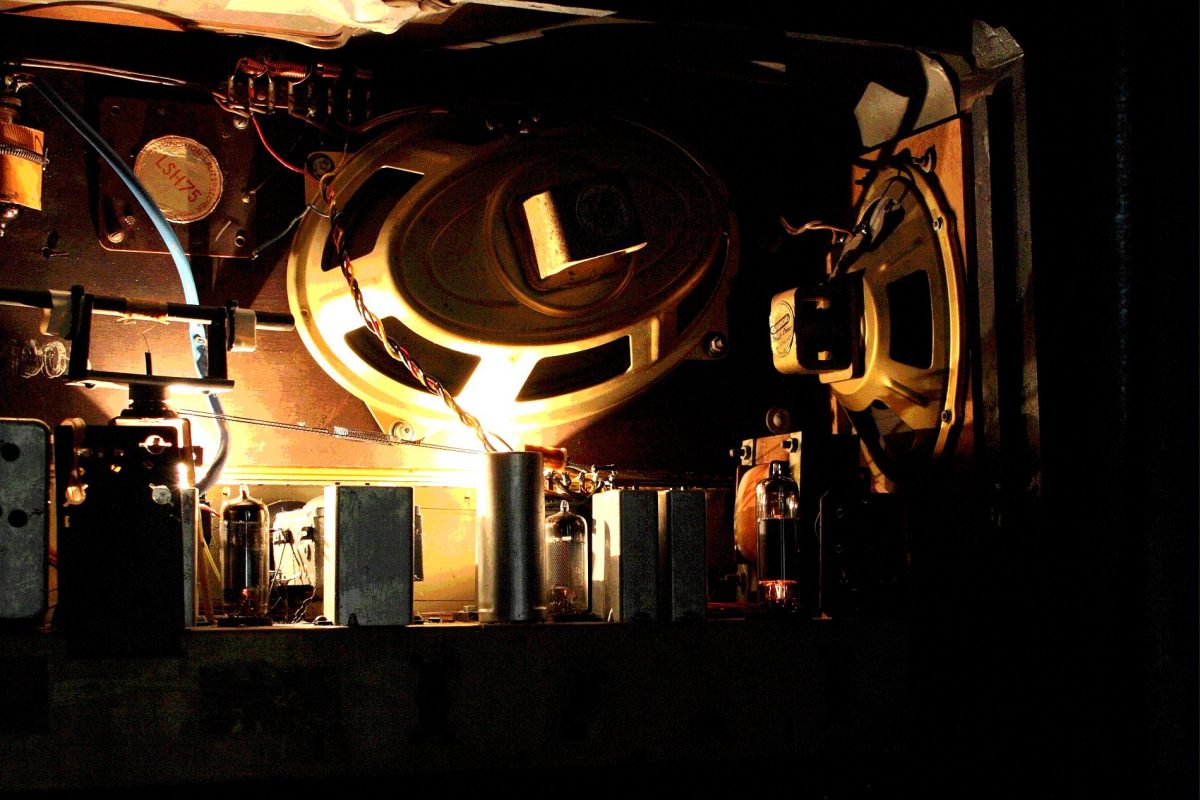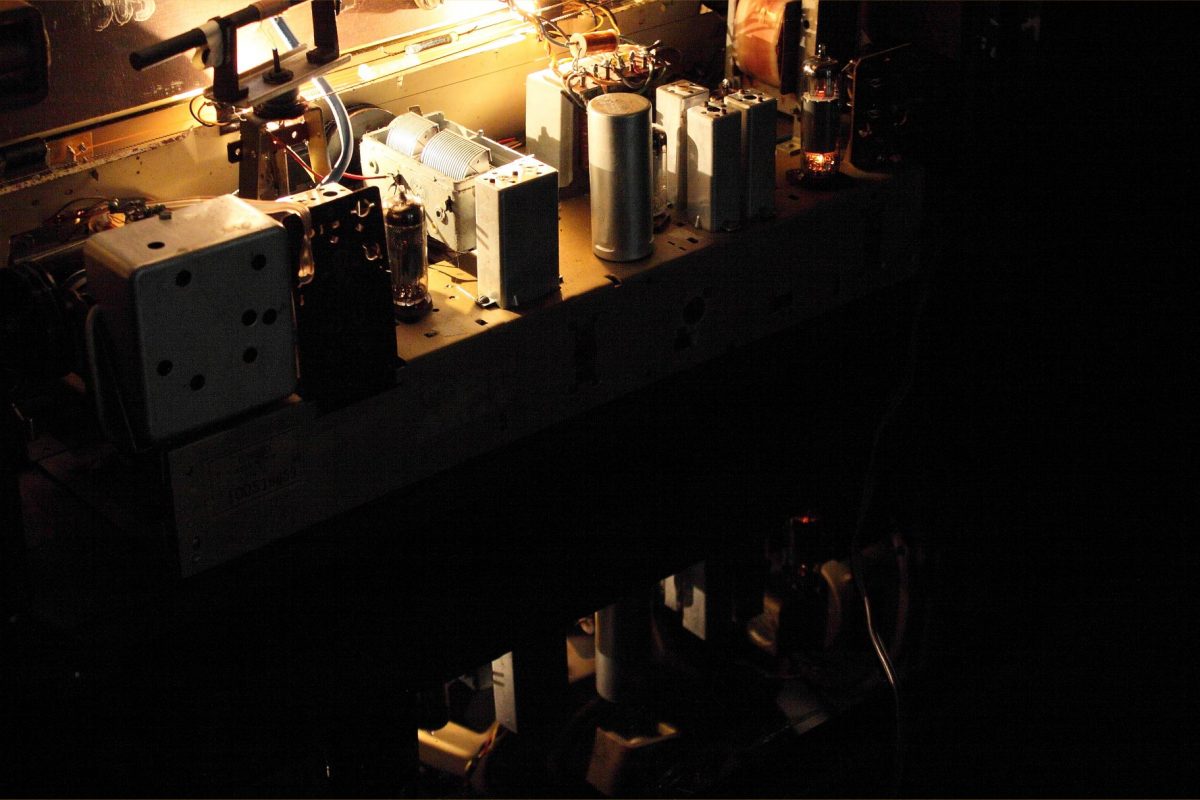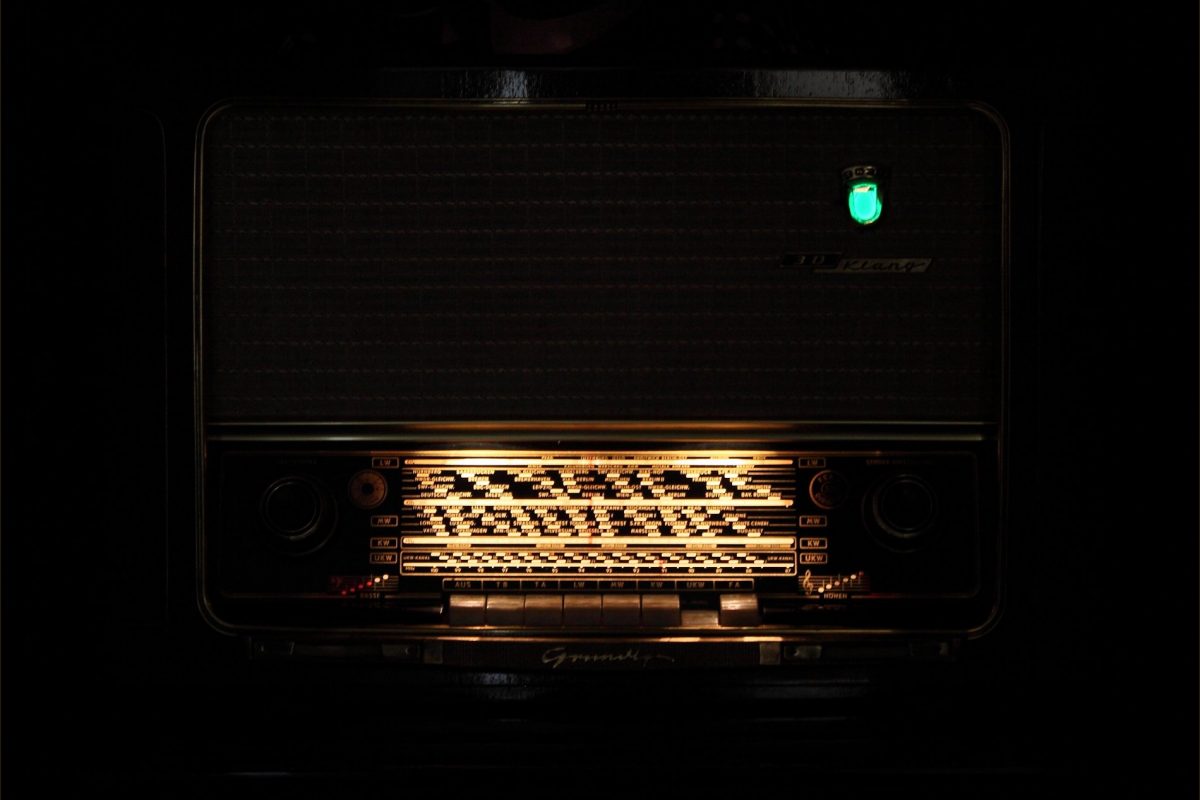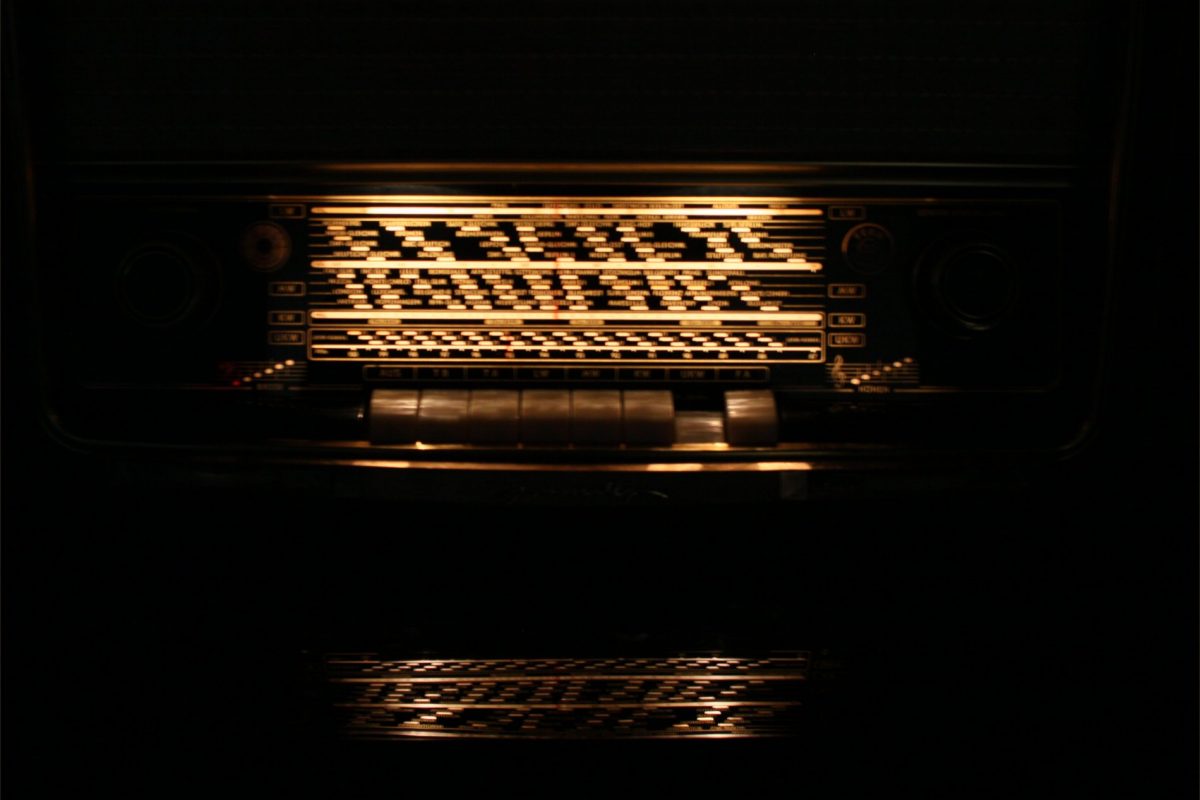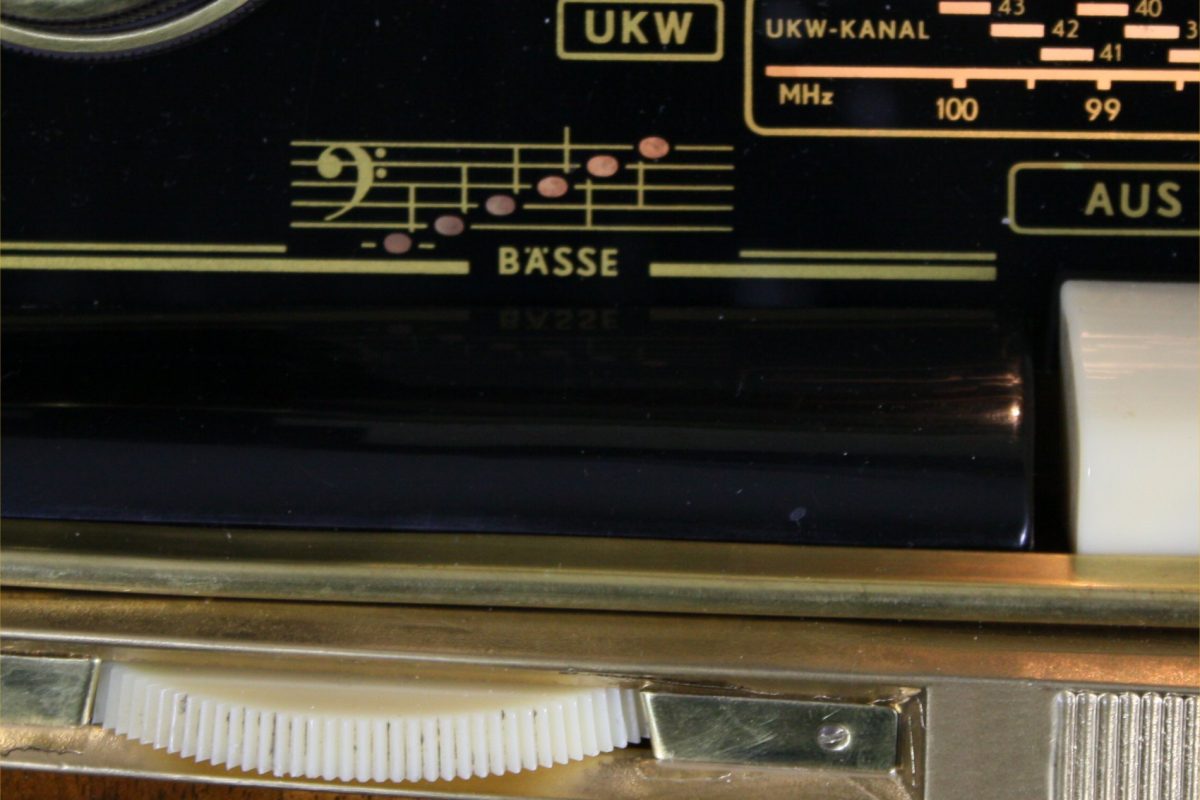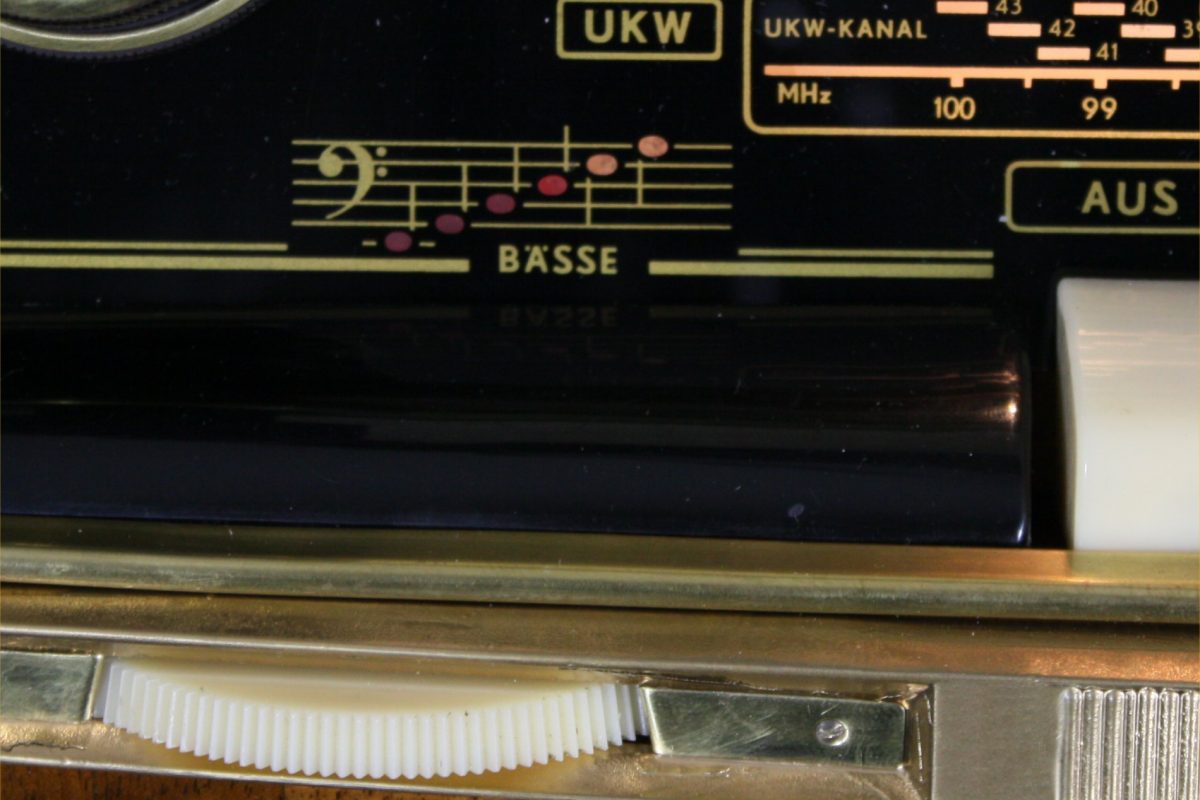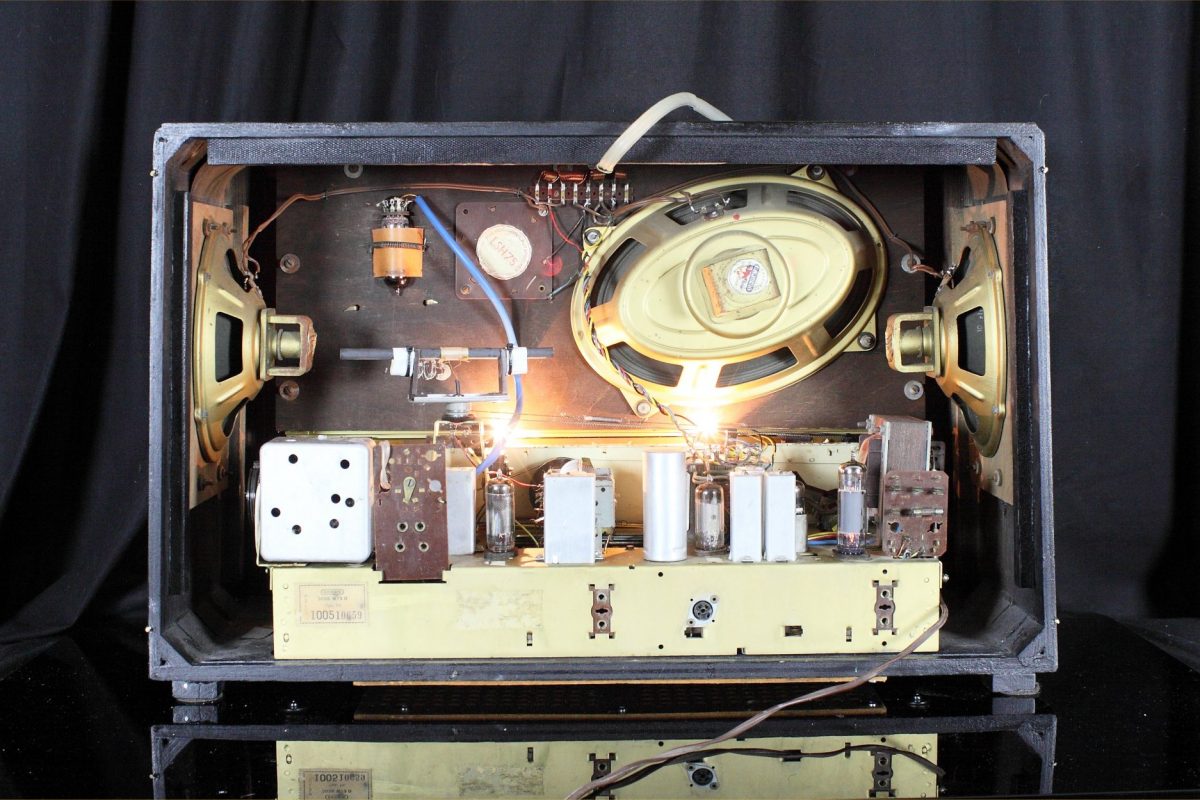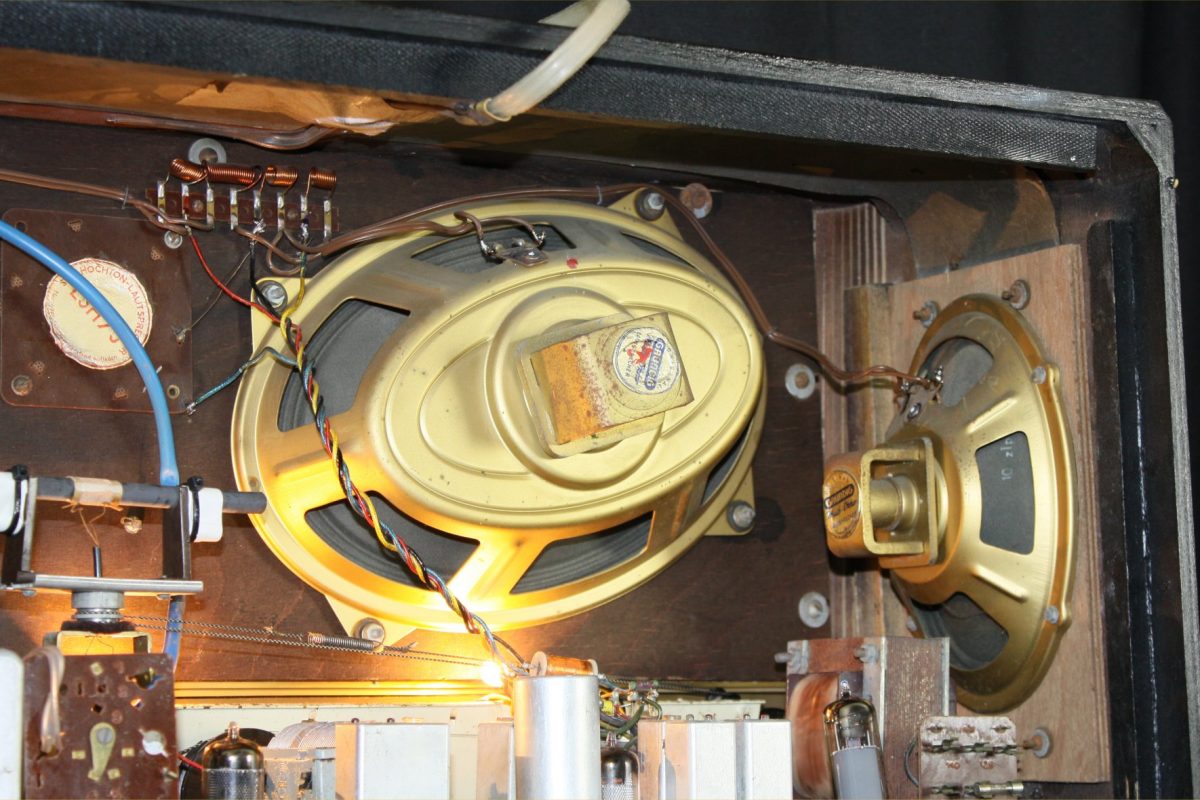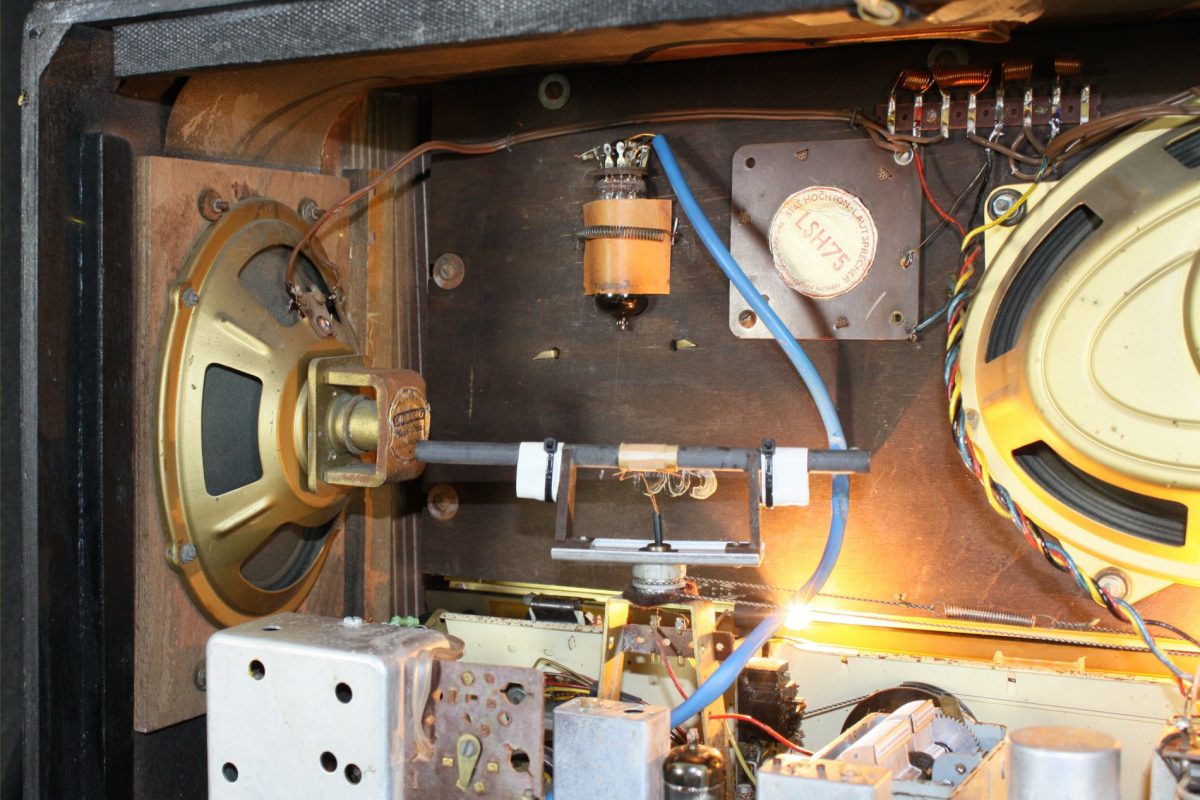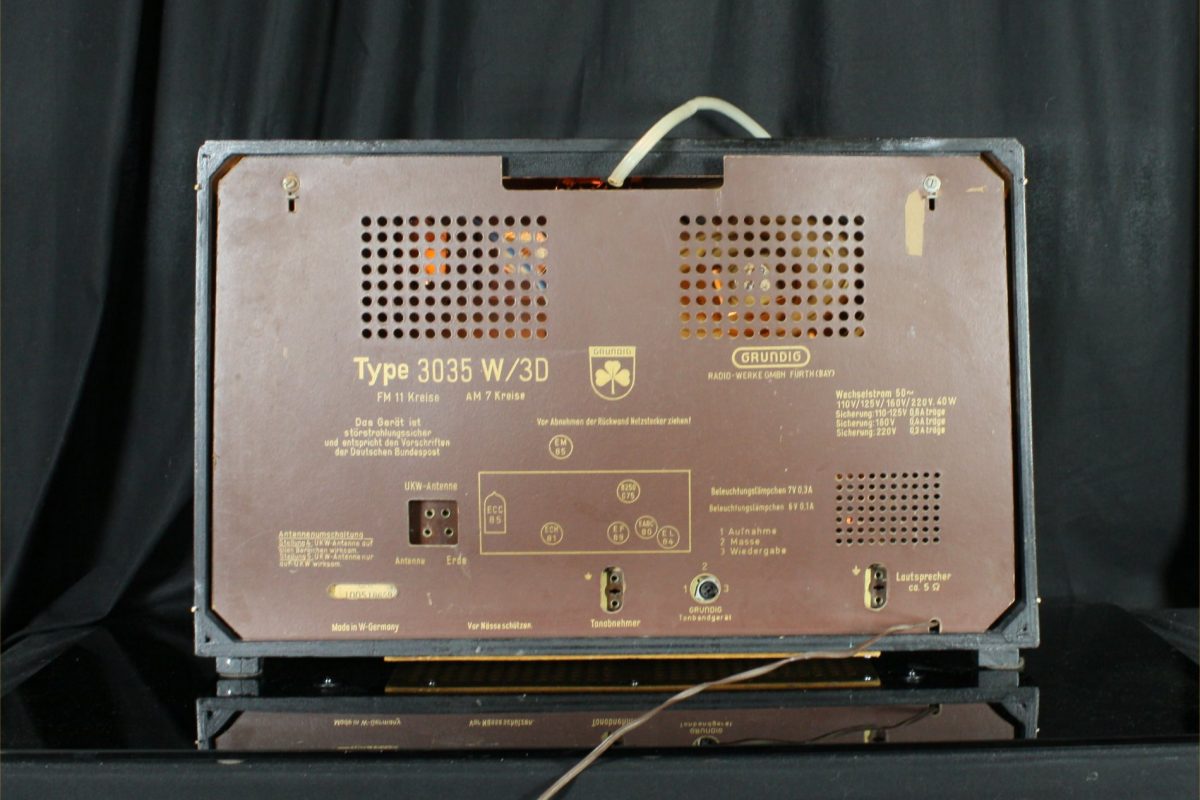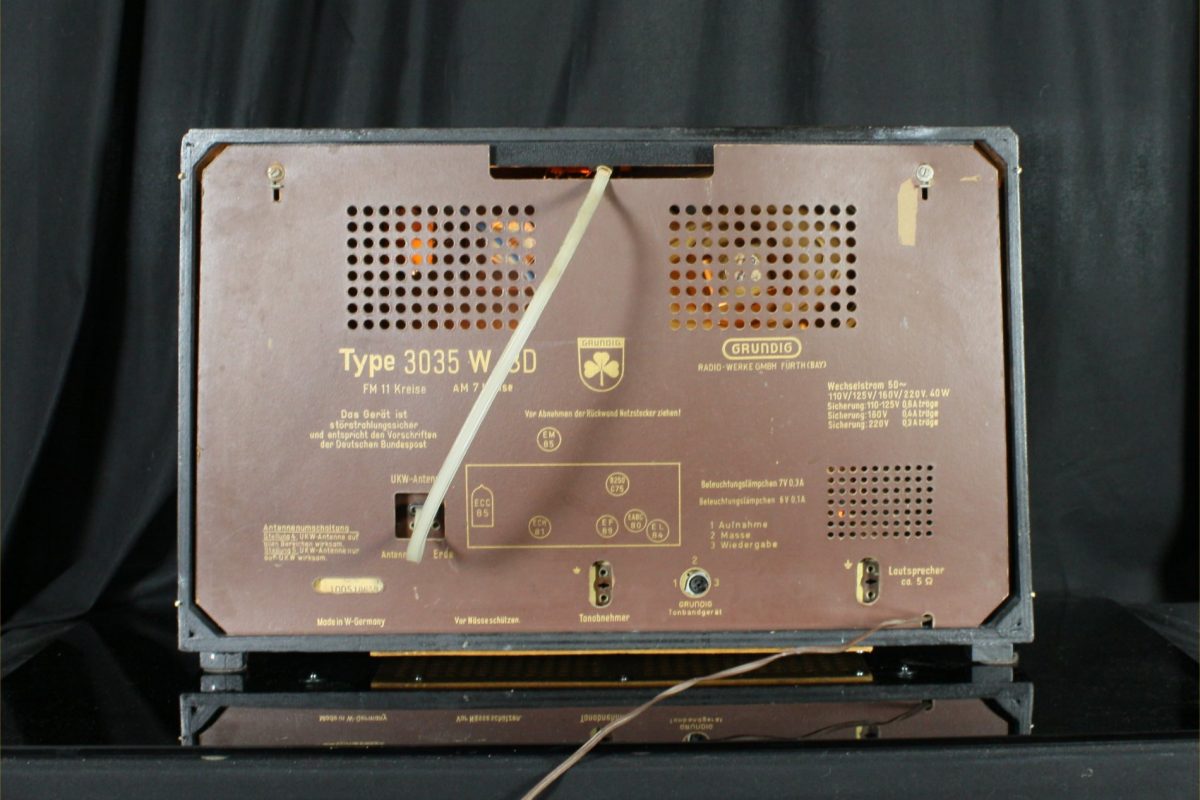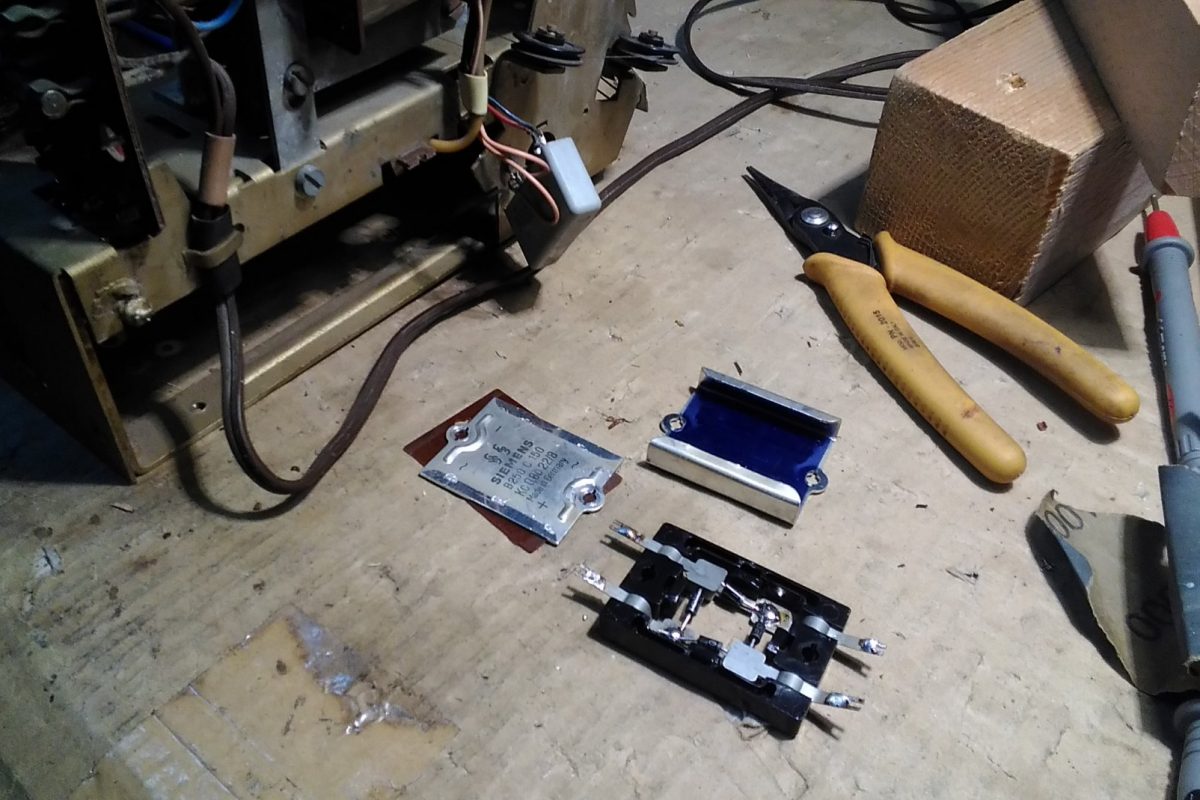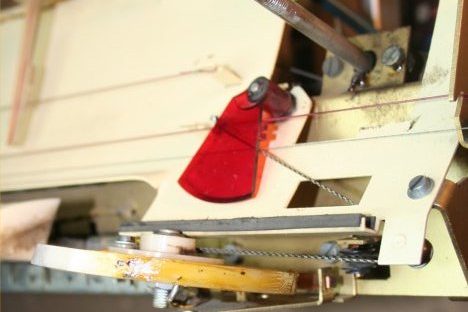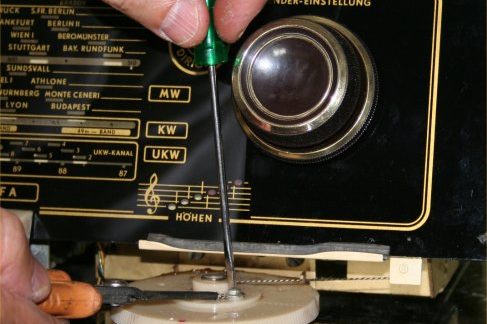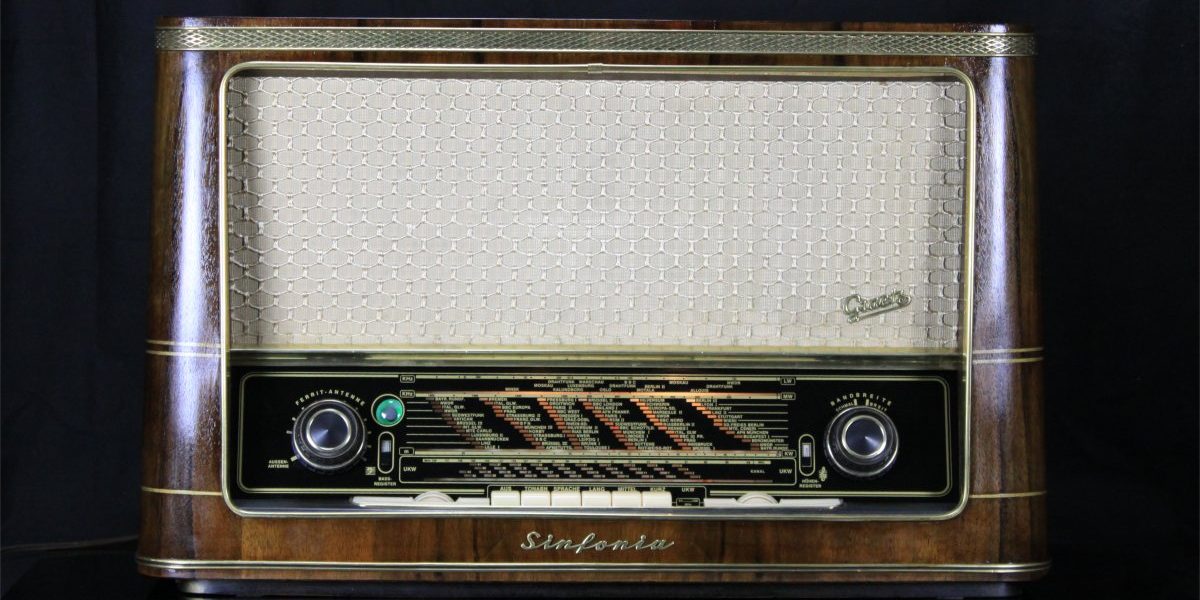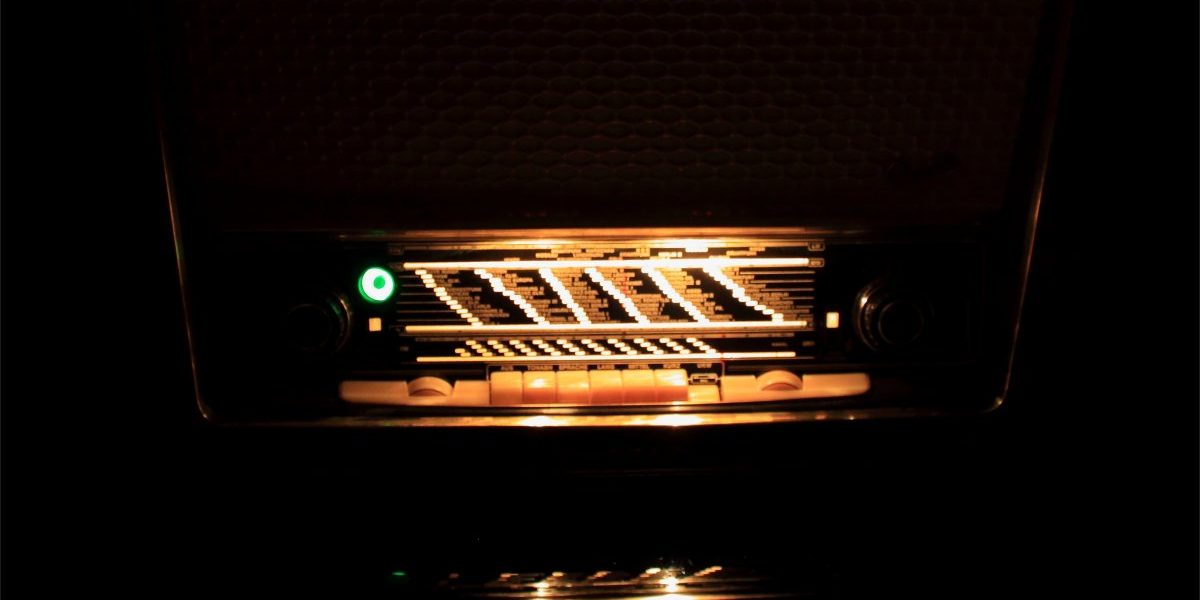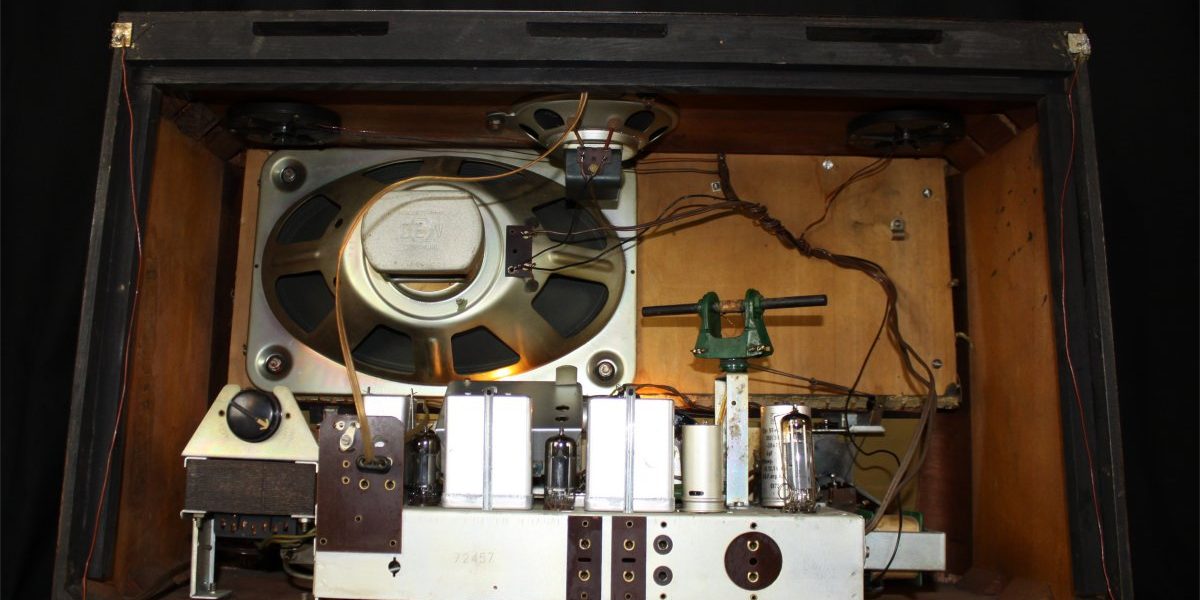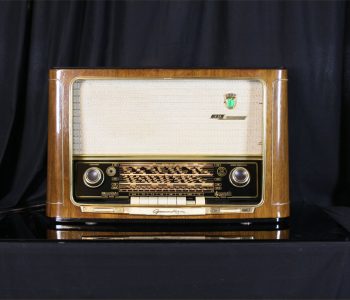 3035 - en
3035 - en
Grundig 3035 – en
- by giovanni
Grundig 3035 3D Klang
Grundig 3035 3D Klang
Grundig 3035 3D Klang is a device classified as medium class of Grundig.
Like some other devices of the 3xxx serie, this one is also particularly interesting.
The thing about this radio that surprised me is the extraordinary reproduction of the spoken parts.
The music is well reproduced but the transmissions where the presence of the speaker is dominant are really impressive.
The voice is present, well balanced and preponderant. All shades, including speaker faults or habits are understandable.
In my opinion, this device is appropriate to the “typical radio listener”, turning on the radio in the morning, turning it off in the evening and listening without temporal continuity to radio commentary, interviews and music.
The Output stage is a classic A-Class with an EL84 valve as final and the triode section of the EABC80 valve as a preamplifier.
The device is equipped with 4 loudspeakers, one of which is an electrostatic frontal tweeter.
At the back of the radio, there is a visible socket where it is possible to connect a remote command. It is possible to turn on the device, adjust the volume and insert some predefined equalizations.
All of this is certainly not standard equipment for middle class devices, but for far superior devices.
The cabinet is important for its size, which guarantees a split between frontal and posterior emissions of the loudspeaker.
The loudspeakers of these radios have been mounted in a particular configuration “quiet open Baffle” whereby a big separation surface is very important for an efficient reproduction of bass notes.
The sound is substantial but the strong point of the radio is the clarity of reproduction of solo instruments and of the voice.

-
BLUETOOTH
Bluetooth receiver embed
-
MULTI PLATFORM CONNECTION
Each radio is equipped with a cable for connection to any digital device.
TUBESOUND IMPROVEMENT
- Bluetooth receiver embed - The unit is equipped with a BLUETOOTH receiver powered directly by the receiver power supply. This makes it possible to control the amplifier from any external digital device as an IPAD, a Smartphone, or a sophisticated multimedia station. So you can hear your preferred web station or your lossesless file without cables on the room. Wireless Receiver can be equipped upon requests.
- Multi Platform Connection - A customized adaptation cable to connect any digital device as Iphone, Smartphone, Laptop, CD Player etc. will be provided with this radio. This special cable suits the different impedances between the modern equipment and the receiver. Furthermore the two stereo channels flow into one without increasing the load to the input unit.
HISTORY
1930 - At 22 years old Max Grundig begin a radio repair business.
1939 - The II world War start. Grundig works primarily for the Wehrmacht and repair of telecommunication equipment.
1945 - Immediately after the war, the demand for repair work was very great. Max Grundig built the first two Grundig appliances: the Tubatest tube tester and the Novatest testing device.
1947 - Start the sale of a kit radio, the Heinzelmann. The unit is the basis of success, sold more than 15,000 pieces.
1950 - Very high frequency (VHF) is introduced to Germany and places new demands on the industry. Grundig launches the 380 W on the market.
1952 - The first television channel starts up in Germany. After intensive research, Grundig launches the FS 080 onto the market. In the same year the first portable tape recorder Reporter 500 L is created.
1956 - After a lot of radio produced with progrssively high performances was produced the Concert Radio 5080 equipped with an equaliser, which has five controls and a visual display.
1965 - A new factory is established in Braga, Portugal. The Satellit 205 is one of many appliances in the Satellit series. This product marks the beginning of Grundig production of high-quality global receivers.
1970 - The Audiorama 7000 Hi-fi was produced, it has twelve dynamic speaker systems in one speaker.
1976 - The Reel Tape Recorder TS 1000 is equipped for semi-professional use.
1980 - The slim-line Hi-fi Tuner ST 6000 and the Monolith Hi-fi Dynamic Flat Top Antenna, which has 22 speaker systems, are two particularly popular appliances in the new hi-fi range.
1984 - After severe drop in sales Philips increased its stake in Grundig 31.6 percent and takes over the corporate management.
1997 - Philips pulls out of its involvement with Grundig.
2003 - The company files for bankruptcy.
2008 - Turkey's Koç Holding took full ownership of Grundig Multimedia B.V., the parent company of Grundig Intermedia GmbH in Nuremberg.
Courtesy of: Grundig
MAIN FEATURES
Year of production: 1954/55
Superheterodyne IF 468/10700
7 AM Circuits
11 FM Circuits
Wavebands:
LW, MW, SW, FM
Operating voltage (CA) 110; 125; 160; 220 Volts
1 Woofer
2 Midrange-Tweeters
1 Electrostatic Tweeter
Dimensions (LHD): 620 x 390 x 263 mm / 24.4 x 15.4 x 10.4 inch
Net weight: 13 kg / 28 lb 10.1 oz
7 Tubes:
ECC85 ECH81 EF89 EABC80 EM85 EL84
Rotating ferrite antenna for AM

TONE CONTROL WITH LEVEL INDICATION
The tones control system is very efficient. Above the large tone control knobs there is a band that lights up gradually indicating the emphasis on the band on which it acts.
A detail specific for “extreme” technical radios lovers: the high-tone control knob is linked to two thin ropes. One of them is for the position indicator of the control itself, whereas the other changes the position of the ferrite in the MF transformers modifying the inclination of the transformer’s curve.
By doing so high tones were attenuated/accentuated even before getting to the BF stage. Tone control was usually put into effect with the potentiometer on the tension amplifier stage
AERIALS
Inside the cabinet there is a dipole for FM reception and a ferrite rotating aerial for AM reception.
Ferrite aerial can be rotated from the outside to achieve a perfect tuning of the device in the AM.
In this picture see the rotation mechanism and the position indicator of the aerial.
The reception sensitivity with internal aerials is very good. This unit was in fact produced in a period when there were not many radio stations and those available fairly apart from each others.
Using an external aerial sensitivity is further increased.

TUNING CONTROL
The tuning system is another gem.
The unit is equipped with mechanisms for keeping separate the AM and FM bands.
The tuning knob is single but a selector switch commutes into cable systems (all in steel) and pulleys separated depending on the band.
The movement is transferred to both mechanisms with a system of pulleys and separated gears.
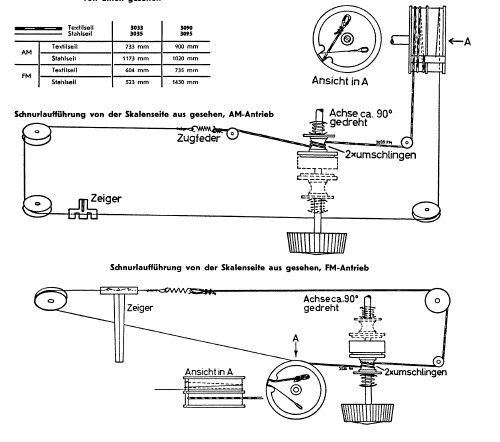
TUNING INDICATOR
The magic eye has of course been replaced.

LOUDSPEAKERS
There are four loudspeakers. In front there is a fixed big wideband loudspeaker and an electrostatic tweeter.
On the sides are placed two elliptical mid- tweeters.
In this way, it is possible to listen to a clean sound from whatever position you listen.
Of course, this radio should not be placed in a bookcase or in furniture that covers the side surfaces.

FERN-DIRIGENT
Remote control connection “fern – dirigent” allows control of the start, volume and equalization.
Below on the right, you can see the diagram “remote control”. It is not easy to find.
The price of the fern – dirigent starts from a minimum of 350 euros and very few are sold in Italy.


CONTROL PANEL

To the left is the volume control (with built-in loudness).
Axially on the volume is the ferrite antenna rotation command.
You see the antenna position indicator.
The AM scale for Court Waves, Medium and Long.
The FM scale.
The magic eye indicating the perfect tuning of each station.
Below to the left we find the off key, turntables key.
The key to tuning on Long, Medium, Short Waves, FM, FA (Ferrite Antennas).
Below each key is indicated the frequency band concerned.
There is finally the knob of the tuning, whose movement is very pleasant being supported by a large flywheel.
Below we find the two big knobs for controlling bass and treble.
LATO POSTERIORE
Remote Connection (fern-dirigent)
Output for external speakers.
Socket for recorder (tonbandgerat).
Turntable input (Tonabnehmer)
AM and FM aerial inputs and ground socket.
RESTORING WORKS
THE USUAL AMAZING LAST IMAGE
